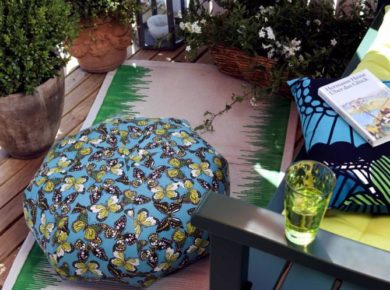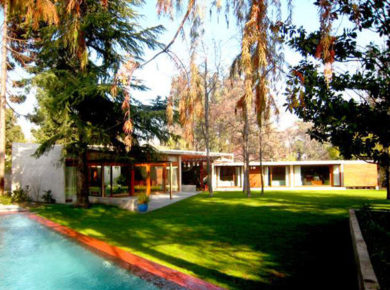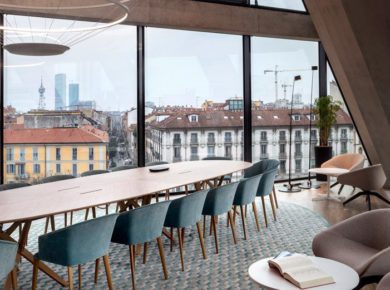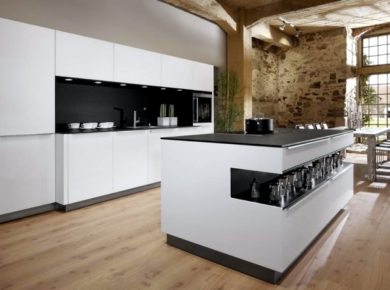
If you like the water effects in your backyard, you can create a small garden pond yourself. This project can be done at any time of the year. Do you still have your doubts? Maybe it seems difficult for you? In the next lines, we want to tell you how you can do it.
Creating a garden pond: what is the best size for you?

The pond size should match the size of your garden. First, choose a suitable spot in the garden and mark the surface. Dig a hole no deeper than 50 cm, which falls gradually off the edge of the hole. The soil should be 5-7 cm thick, coated with a layer of clay. That’s a way you can do it in areas where you have natural clay. Clay soil prevents water drainage. You then can fill the hole with a mixture of moist peat and humus. If you cover the soil with moss, you will get the maximum effect, similar to the natural swamp lake. After that, you can arrange the rocks on the shore and plant appropriate plants.
The shape of a small garden pond

You can create your pond with different construction methods. If you insist on vegetation, the depth of the pit shall be no more than 30-40 cm. Depth up to 80 cm is allowed for garden ponds, where there are fish. The edges of the pit should be on a slope. The best angle is 20 degrees. The shape of your garden pond can be conventional – square or rectangular, but can also be designed round, elliptical or kidney-shaped. If the lake does not have a regular geometric shape, it blends in better with the landscape of the garden and looks more like a natural pond. So you prepare the area, remove rocks, roots, etc., and level the site. Then put at least a 5 cm layer of fine sand. Only then you can put the foil and fix the ends. To seal the pond surface, use polyethylene or tarpaulin. Each part must be covered with each other at least 10 cm and sealed with a suitable adhesive.
Creating a natural look garden pond

The edges of the landscape can be made by beautiful stones. Organize them alongside the pond. The stones can be in different shapes and sizes. You can obtain them from your local area, or buy in stores. Combine different sizes of stones for a natural look.
Aquatic vegetation in the garden pond

For planting aquatic vegetation, there are two possibilities. You can either make a suitable base of gravel, sand, and earth on the foil and grow aquatic plants, or the other way is to use aquatic plants already grown in baskets or containers for your pond. The choice and combination of aquatic plants should be done carefully. This coastal vegetation should suit your taste, but also must create a stable environment for your artificial pond. Aquatic plants are divided into several groups: in deep water, floating plants, and those who can only live in shallow water. To create a balanced environment, you need to choose plants of different groups. Aquatic vegetation must be planted at least ten days after the construction of the lake.
Aquatic vegetation of your taste

There are special plants that can be planted in your pond, this is the group of plants that grow well on the sides of ponds or in shallow water, and their roots are submerged in water. These plants are also used to purify water, absorb nitrogen, phosphorus, and potassium from the water. There are some very interesting native species, but also a variety of exotic plants that have been introduced in our country because of their decorative elements. Here is a list of the most popular aquatic plants, which are generally found in garden ponds:
Called Indian cane or calamus swamp – Acorus calamus
Acorus calamus – Indian calamus, also called swamp calamus or Sweet Flag
Alisma Plantago – Water-plantain- Common known as Frog Spoon
Astilbe hybrida – Hybrid Astilbe
Calla palustris – Water-arum
Eleocharis parvula
Floating plants are those in where the leaves and flowers are on the surface of the water. Below you can see the different types:

Aloeviden stratiotes – claw
Pistia stratiotes – Water Lettuce
Of course, we must not forget one of the most beautiful and popular aquatic plants, this is probably the white water lily (Nymphaea alba). It is widespread, but it is now under protection. There are also colorful lilies, red and yellow, which also look as beautiful in the water. The water lily is a perennial aquatic plant with leaves above and below the water surface. It blooms from June to October and is the queen of aquatic plants.
Calla palustris – Water-arum

These are some useful and practical tips on how you can beautify your garden and create a small artificial pond. If you do not have success in the first attempt, you must try again. Sure, it would be nice if everything was successful right away, but that’s not how things work. Therefore, do not be discouraged if things do not work properly from the beginning. Do not ask for too much at once, remember practice makes perfect. Also, you do not have to build Rome in a day, right? We wish you much success in your project!
Waterlily

Plantain

Kalmus Indian

Claw

Water lettuce

















